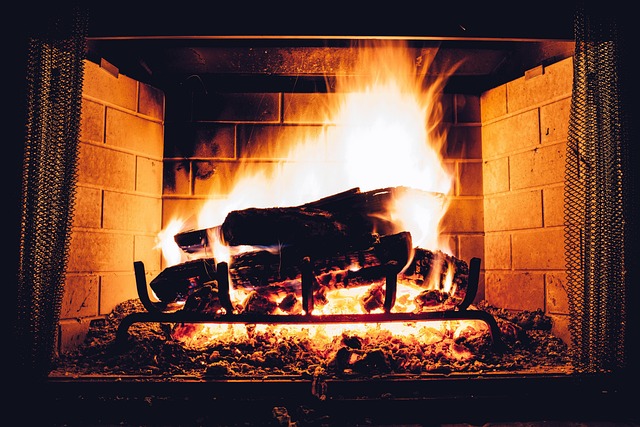Explore the various types, benefits, and applications of fireplaces
Fireplaces have been at the heart of homes for centuries, evolving from essential heating sources to sophisticated design elements. Today's market offers diverse options from traditional wood-burning models to modern electric alternatives, each with unique characteristics and advantages. Understanding the different types of fireplaces and their applications can help homeowners make informed decisions about the perfect hearth for their living spaces.

Fireplaces have served as both functional heating sources and focal points in homes for centuries. From rustic wood-burning hearths in country cottages to sleek gas inserts in urban apartments, these warming features blend practicality with aesthetic appeal. Modern fireplace technology has expanded the possibilities, allowing homeowners to enjoy the ambiance of dancing flames in virtually any setting. This comprehensive guide explores the various types of fireplaces available today, their distinctive benefits, and practical applications to help you determine the ideal option for your home and lifestyle needs.
Understanding Different Fireplace Types
Fireplaces generally fall into four main categories, each with distinct characteristics. Traditional wood-burning fireplaces feature an open combustion chamber, chimney, and typically masonry construction. These classic options provide authentic crackling sounds and aromatic wood scents. Gas fireplaces operate on natural gas or propane, offering convenient ignition systems and adjustable flame control without the need for wood storage or ash cleanup. Electric fireplaces plug into standard outlets and use light technology to create flame effects, requiring no venting and minimal installation. Finally, ethanol fireplaces burn bioethanol fuel, producing real flames without needing vents or chimneys, making them highly versatile for placement.
Advantages of Different Types of Fireplaces
Each fireplace type offers unique benefits worth considering. Wood-burning fireplaces provide unmatched authenticity with natural flames, distinctive aromas, and crackling sounds that create a cozy atmosphere. They can also function during power outages, serving as reliable emergency heat sources. Gas fireplaces deliver exceptional convenience with instant on/off operation, consistent heat output, and minimal maintenance requirements. Electric models excel in flexibility, requiring no venting or structural modifications while offering customizable flame effects and the option to operate with or without heat. Ethanol fireplaces combine real flames with remarkable installation flexibility, as they need no venting, gas lines, or electrical connections, making them suitable for almost any room.
Applications of Different Types of Fireplaces
Fireplaces can enhance virtually any living space when properly matched to the environment. In traditional homes, wood-burning or gas fireplaces with classic mantels complement architectural elements while providing functional heating. Modern and minimalist spaces benefit from sleek gas or electric linear fireplaces that offer clean lines and contemporary styling. Small apartments or condos with space limitations or building restrictions can utilize ventless electric or ethanol models that require minimal clearance and no structural modifications. Outdoor living areas extend their usability with specially designed exterior fireplaces that withstand weather elements while creating inviting gathering spaces for year-round enjoyment.
Daily Use and Maintenance of Fireplaces
Proper maintenance ensures safety and optimal performance regardless of fireplace type. Wood-burning fireplaces require the most attention, including regular ash removal, annual chimney inspections, and cleaning to prevent dangerous creosote buildup. Gas fireplaces need annual professional inspections to check gas connections, venting systems, and burner components. Electric fireplaces demand minimal maintenance—primarily dusting and occasional light bulb replacement. For all fireplace types, keeping the viewing glass clean improves appearance and heat efficiency. Establishing a maintenance schedule based on your specific fireplace model and usage patterns helps extend its lifespan while ensuring safe operation throughout the heating season.
Energy Efficiency and Environmental Considerations
Fireplace efficiency varies significantly across different types. Traditional open wood-burning fireplaces typically rate lowest in efficiency, with up to 90% of heat escaping through the chimney. However, EPA-certified wood stoves and inserts can achieve 70-80% efficiency. Gas fireplaces generally operate at 70-80% efficiency, with direct-vent models performing best by drawing outside air for combustion. Electric fireplaces convert nearly 100% of electricity to heat when used with heating elements, though their overall environmental impact depends on the electricity source. Ethanol fireplaces produce clean combustion with minimal emissions but provide moderate heat output. When selecting a fireplace, considering both efficiency ratings and environmental impact helps balance ambiance with responsible energy use.
Cost Comparison of Different Fireplace Options
Fireplace costs vary widely based on type, features, and installation requirements. Understanding the investment needed for different options helps with budget planning and long-term value assessment.
| Fireplace Type | Initial Cost Range | Installation Cost | Operating Cost |
|---|---|---|---|
| Wood-burning | $1,500-$5,000 | $2,000-$10,000 | $190-$300/cord |
| Gas | $2,000-$5,500 | $500-$3,500 | $200-$500/year |
| Electric | $150-$2,000 | $0-$500 | $50-$80/year |
| Ethanol | $500-$5,000 | $0-$300 | $2-$5/hour |
Prices, rates, or cost estimates mentioned in this article are based on the latest available information but may change over time. Independent research is advised before making financial decisions.
Wood-burning fireplaces typically have higher installation costs due to chimney requirements but may offer lower fuel costs in areas with abundant wood supplies. Gas fireplaces provide an excellent middle ground with moderate installation and operating costs. Electric fireplaces offer the lowest entry point and installation expense but may cost more to operate in regions with high electricity rates. Ethanol models require minimal installation but have higher fuel costs for regular use. Additionally, maintenance expenses should be factored into the long-term cost equation, with wood-burning units typically requiring the most ongoing maintenance.
Conclusion
Fireplaces continue to evolve, offering solutions that balance tradition with innovation. Whether you prioritize authentic ambiance, convenience, installation flexibility, or environmental impact, today’s market provides options to suit various preferences and constraints. By understanding the different types of fireplaces, their unique benefits, practical applications, and maintenance requirements, homeowners can make informed decisions that enhance both the functionality and atmosphere of their living spaces. From traditional wood-burning hearths to contemporary flameless alternatives, the perfect fireplace exists for every home and lifestyle.




